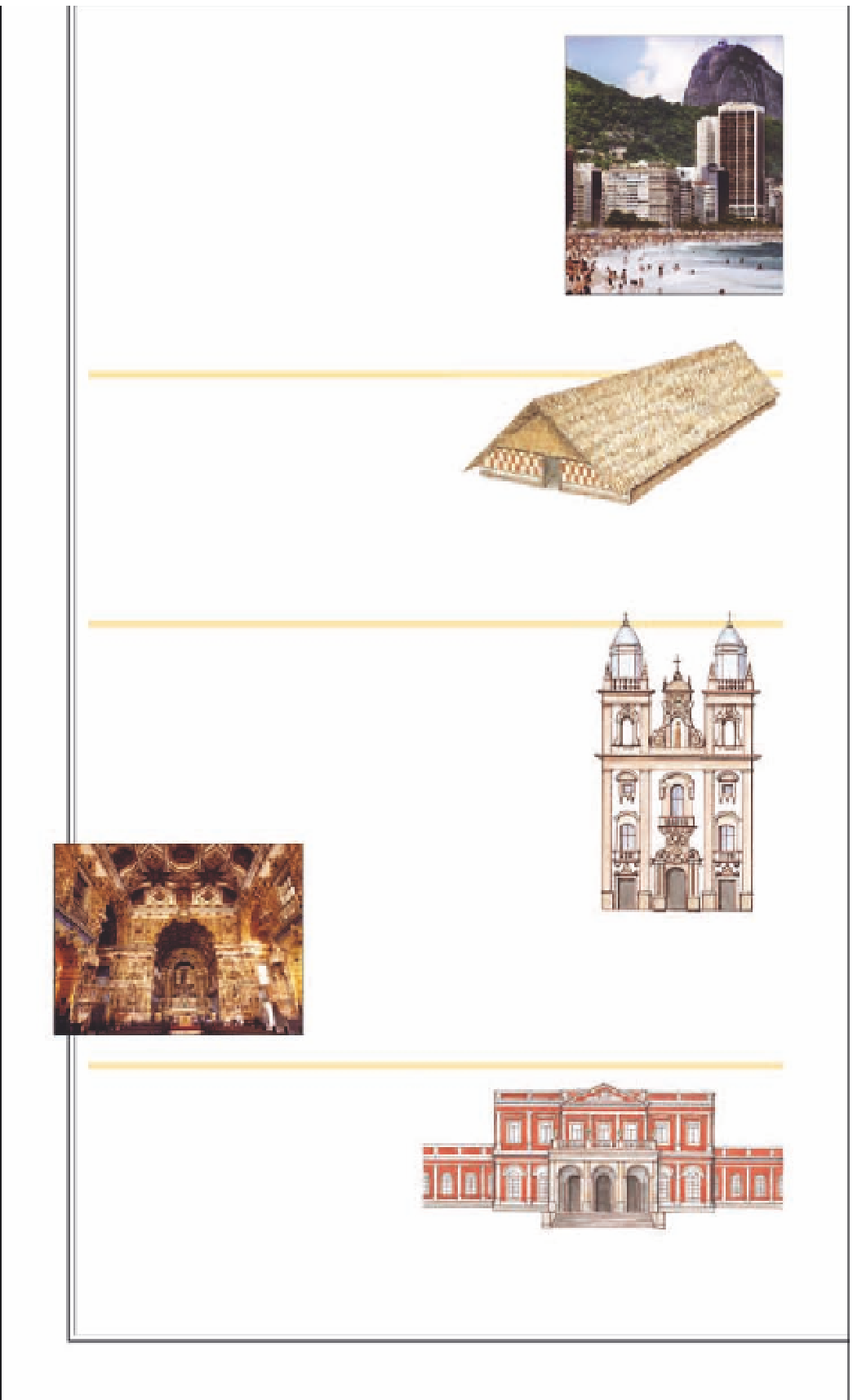Travel Reference
In-Depth Information
Architecture
The first buildings in Brazil were made by the
indigenous peoples. As these structures were made
from perishable materials, little is known of them
beyond early European descriptions. Colonial
churches and other buildings were in spectacular
form in the 18th century during the Baroque era. After
independence, Brazil followed European trends until
Lúcio Costa and Oscar Niemeyer developed Brazilian
Modernism, most strikingly expressed in the new
capital Brasília. Today, Brazil is dominated by high-
rises punctuated by the occasional striking building
by a contemporary architect such as Ruy Ohtake.
Avenida Atlântica at Copacabana
beach, Rio de Janeiro
Dyed tree bark
INDIGENOUS
Francisco de Orellana (1511-46), the
first European to navigate the Amazon,
described large cities created by
Curucirari people extending for as much
as 6 miles (10 km) and cut by large
roads. These large cities no longer exist.
Today, traditional indigenous villages
are smaller and focus on a large
communal
maloca
. Less traditional ones
are made up of wattle-and-daub houses.
Open
entrance
Sloping
thatched
roof
Kayapó malocas
,
or
ocas,
are communal
longhouses, usually measuring 92 ft (28 m)
in length and 59 ft (18 m) in width. Their
shape and design influenced many of Oscar
Niemeyer's buildings.
BAROQUE
Baroque architecture began in 17th-century
Europe but reached its most exuberant
in Latin America. Brazilian Baroque is
characterized by elaborately carved, painted
interiors and ornate, florid forms set in
modest, whitewash-and-raw stone façades.
The style found its zenith in Salvador and
Recife, and in the sculptures of Aleijadinho
(see p131)
in Minas Gerais.
Elaborately
carved stone
tablet
The
monumental
door, offset
by the
modest
façade
São Francisco de Assis
, in
Salvador,
is a display of wealth
and splendor. The interior of the
church is covered with almost 900
lb (450 kg) of gold. Silver, gold
leaf, and solid gold are coupled
with stunning
azulejos
, or blue
Portuguese tile work.
São Pedro dos Clérigos
, in
Recife, is rich in ornamental
flourishes typical of the
Baroque. Its second tower
was left incomplete in order
to avoid a tax on churches.
NEO-CLASSICAL
Neo-Classicism is associated with
Imperial Brazil and came to Brazil
with the Portuguese monarchy who
fled Napoleon in 1807, bringing the
most fashionable European archi-
tectural ideas with them. The first
Neo-Classical buildings were civic
edifices in Rio de Janeiro and
palaces in Petrópolis. These quickly
became the norm for buildings of
state in the rest of the empire.
Typical Palladian
portico
Frieze in
bas-relief
style
The Museu Imperial
, in Petrópolis, marked the
advent of the most popular form of Neo-
Classicism. Its architect, Julius Köhler, was
influenced by the English Palladian style.
Ionic
column














































